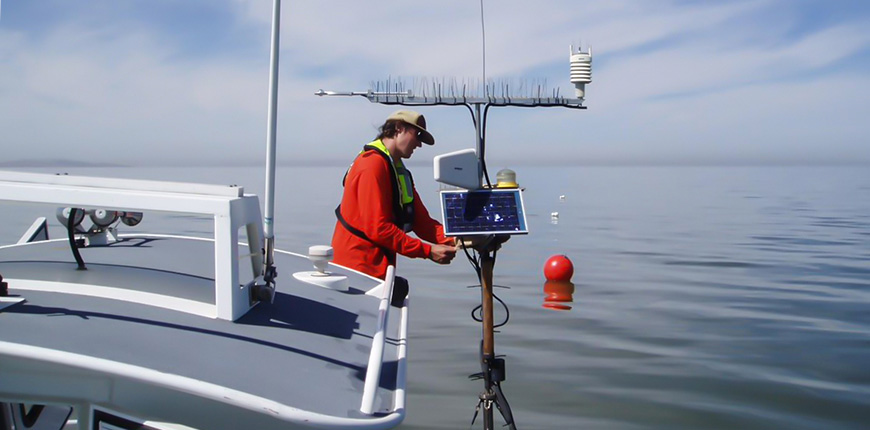
Routine water-quality data collection helps the Division of Water Quality (DWQ) take appropriate actions to protect Great Salt Lake’s (GSL) beneficial uses. DWQ’s Great Salt Lake monitoring program is designed to detect potential changes in water quality conditions, support the development of numeric and narrative water quality standards, guide discharge permitting decisions, and assess beneficial use attainment in GSL.
Sampling Sites
Sampling under DWQ’s GSL monitoring program began in Spring 2011. Monitoring is conducted twice-yearly and includes sampling of water-quality, brine shrimp, and bird eggs. Water quality and brine shrimp samples are collected at 11 sites across the GSL:

- Gilbert Bay (eight sites)
- Farmington Bay (two sites)
- Bear River Bay (one site)
Bird eggs are collected during the spring breeding season where nesting occurs along the GSL shoreline.
Water samples are analyzed for:
- Nutrients
- Total recoverable metals (e.g., selenium and mercury)
- Total dissolved solids
- Chlorophyll-a
Brine shrimp and bird egg samples are analyzed for trace metals concentrations, including mercury and selenium. Selenium concentrations from bird eggs are used to evaluate attainment of GSL’s selenium standard.
Sampling Frequency and Protocol
Samples are collected during spring (June) and fall (October). However, site access issues due to low water levels have occasionally limited sample collection.
At sites with a water depth greater than one meter (m), two samples are collected: 0.2 m from the surface and 0.5 m from the bottom. At sites with a water depth less than one meter, only one sample is collected 0.2 m from the surface. In addition to these environmental samples, field crews also collect quality assurance/quality control (QA/QC) samples including field blanks and field replicates under DWQ’s GSL monitoring quality assurance project plan to ensure high-quality data. Samples are collected through a collaboration of DWQ, United States Geographical Survey (USGS), and Davis County Health Department staff.
Monitoring Protocols
DWQ monitoring staff adhere to specific standard operating procedures (SOPs) for sampling and biota collection. These SOPs include the sampling equipment required, cleaning protocols for equipment, sampling procedures, types of samples collected, sample locations, and documentation of field activities, including field measurements.
- GSL water sampling standard operating procedure
- Brine shrimp collection standard operating procedure
- Shorebird egg collection standard operating procedure
- Shorebird food item and co-located water and sediment sampling standard operating procedure
Monitoring Results
Results from DWQ and cooperator agency monitoring programs can be viewed and analyzed via DWQ’s Great Salt Lake Data Explorer. The Data Explorer provides a comprehensive compilation of data for different parameters:
- Lake-level data from 1970 to the present, including lake levels for Gilbert and Gunnison Bay, estimated volumes, and north-to-south elevation differences
- Water-quality data (2010 to the present) for total phosphorus, total nitrogen, and salinity
- Metals data (surface and deep layer) for three matrices: water quality, brine shrimp, and bird eggs.
- Water-quality map (surface and deep layer) for selected parameters, including salinity, water temperature, Secchi depth (water clarity/light penetration), total phosphorus, chlorophyll-a, and total nitrogen.
